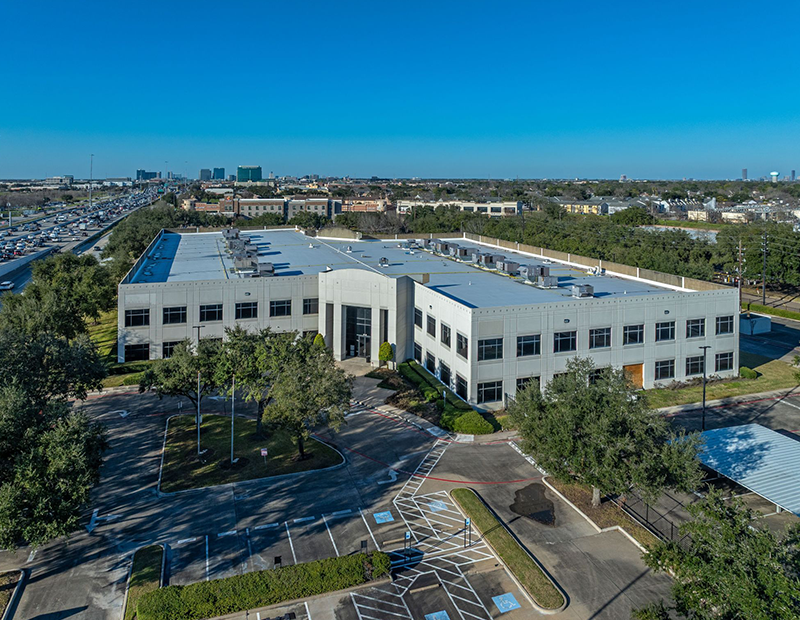Banks Rebalance, Refuel, Recyle
Liquidity today is driven by competition between banks. That's a switch!

Commercial real estate mortgage loan originations got a significant bump in Q1 2025 then surged another 48 percent in the second quarter to 66 percent year-over-year, according to MBA’s Quarterly Survey of Commercial/Multifamily Mortgage Bankers Originations.
And that was despite little change in the Fed rate, looming regulatory changes, the imposition of tariffs, continued inflation, economic policy uncertainty and slowing GDP growth.
Most notable, however, was the reentry of big banks to commercial real estate lending, according to Zachary Streit, president & founder of Priority Capital Advisory, a debt and equity capital advisory firm.
“Banks are leading the way because their cost of capital is still meaningfully lower than private credit.” Streit said, noting that regional banks have been very active in the $20 million to $100 million range while national banks are reengaging on larger credits.
Among investor types, MBA reported that the dollar volume of loans originated for depositories in Q2 increased 108 percent year-over-year while loans for investor-driven lenders grew 93 percent. The trade group also found a 72 percent increase in loans for life insurance companies, a 59 percent increase in government-sponsored enterprises loans and a 10 percent decrease in CMBS loans.
LIKE THIS CONTENT? Subscribe to the CPE Capital Markets Newsletter
Banks emerge from upside-down loans
Anecdotally, Judie Ricks, associate vice president of commercial real estate research at MBA, told CPE that MBA sees bank lenders really working on and thinking carefully about what’s in their portfolios and doing any rebalancing necessary.
“If you look at the FDIC’s data, for example—from their call reports, you can see small increases in charge-offs,” she said, suggesting that’s likely on the bank lending side, where those institutions have sufficient reserves to rebalance and make new loans.
Tighter spreads and lower rates are leading to more loans qualifying, and the continued build-up in maturing loans is forcing some action, said Dillon Freeman, senior commercial loan officer at Fidelity Bancorp Funding, a bridge loan lender: “It feels like the maturity wave is starting to lead to a pickup in activity on the sales and lending side, as those that have kicked the can are forced to come to grips with reality.”

Streit suggested that the amount of extend-and-pretend is declining because banks are once again in a position of strength after modifying significant portions of their portfolio.
“Banks are playing offense instead of defense, recycling capital into new deals instead of just managing legacy exposure,” he said, noting that many banks are offering refinancing solutions at competitive rates rather than simply pushing maturities.
Bottom line? The yield curve makes it much harder for banks to continue to extend maturing loans since the cost of funds compared to yields from loan extensions makes this a money-losing proposition for banks, noted Christopher Stanley, senior director, Americas Banking Industry Practice Lead at Moody’s Analytics.
Banks engage “middle man” to fund riskier CRE
While bank lending is in an upward trajectory, experts say the interest rate environment has required a lot of strategy and adjustment in the mix and duration of loans that banks are seeking to make—and that mix continues to evolve.
Increased transparency in reporting rules, for example, has revealed that while banks may limit traditional, direct loans for commercial real estate, they are indirectly funding real estate by lending to private credit funds that, in turn, lend to commercial real estate investors.
“A lot of these are warehouse loans or flow-type arrangements are with private equity funds,” Stanley noted.
This play enables banks to stay in the real estate lending game while pushing underperforming or what they see as risky commercial real estate loans off their books.

“Oftentimes those loans are getting refinanced or picked up through whole loan purchase by private credit funds, and then that loan balance is being reused or reclassified into loans to the funds themselves,” Stanley added. “So rather than holding direct exposure to a company or property, banks make the loan to the fund and let the fund manage their own portfolio.”
A lot of banks have their own private lending space, which is another way they’re staying competitive in the market, Ricks noted: “So when their traditional commercial real estate lending portfolio can’t handle or be competitive with the market, they can push those loans to their own effectively like unit that is private lending.”
It’s not the Fed that decides pricing
Currently, everyone’s watching to see how the Fed’s decision to cut the short-term rate by 25 basis points today will impact pricing and overall lending activity. MBA predicts two more rate cuts by the end of this year, but Ricks stressed that that isn’t the only factor in determining market interest rates.
“The pass-through of interest rate cuts is not one-to-one in the commercial market or really in any market that provides loans,” Ricks said, noting that market rates are impacted by economic factors, including inflation, economic growth, and what’s happening in the bond market.
What ultimately is going to matter is investors’ beliefs. “If investors believe that interest rate cuts are, for example, going to generate higher inflation, then that could end up pushing longer-term rates up regardless of any rate cuts,” she noted. “So, it’s really hard to know. And with the current economic uncertainty that still exists, I think ultimately we have to see how investors respond.”
But lenders are already competitive, noted Dillon. His firm recently took a large retail property to market that had some credit blemishes and received a wide range of aggressively-priced offers—from CMBS to regional banks—inside of 160 basis points for nonrecourse debt.
A rate cut would help around the margins, Streit said, but other forces are at play.
“What’s driving liquidity right now is competition among banks,” he said, noting that banks are offering spreads that are beating private credit. “Banks have returned to the market because they need loan growth, they’re flush with deposits and a significant amount of pretend-and-extend has artificially stabilized credit reporting.”
That combination, plus a clearer rate environment, has led to the surge in lending activity.

Some bridge debt, Freeman noted, is pricing as tightly as the SOFR+250 range, which amounts to a ~6.75 percent rate—about 1 percent above the perm market. Therefore, he contends that it would take substantial progress on the Fed Funds rate or spreads to make a meaningful difference in market rates and a substantial drop in Treasuries and static or falling mortgage spreads to make a meaningful difference in the amount of loans able to qualify for refinancing.
“My long-held view is that long-term interest rates are trading in a range roughly based on economic growth plus inflation plus term premium, which would put them already at roughly where they should be assuming equilibrium over the longer term,” said Freeman.
Banking regulators lighten up
Some softening in banking regulations may also play a role going forward. Fed Chairman Jerome Powell last year told Congress he anticipated “broad and material changes” to the proposed Basel III Endgame requirements, which specify that banks with $100 billion or more in assets significantly raise their capital reserves and take other risk-reducing measures. This policy, which began its three-year countdown on compliance on July 1, had played a role in national banks deciding to limit their exposure to commercial real estate.
More recently, banking executives noted that U.S. regulators are pulling back on some bank exams required by Basel III and will use confidential disciplinary notices, a sign lenders are already benefiting from a softer touch under the current administration. This also includes a softer approach when instructing banks to fix problems. Banks have long complained that notices are frequently overly aggressive, both in number and tone.
Large banks affected by Basel III are more than likely preparing to comply with the rule’s capital requirements, even if the rule isn’t final yet, Stanley said. “Worst-case scenario is the rule gets finalized and you do need the capital,” he noted. “Best-case scenario, the rule never passes, and you’ve got some excess capital that can be redeployed or returned to shareholders or whatever.”
Considering the U.S. played a leading role in the international banking accord that established the Basel initiative to prevent another Great Financial Crisis, Basel III is not likely to just go away, however. “I still think there’s going to be some kind of a rule,” Stanley said. “I just think it’s going to look very different from the original proposal.”
Streit noted, however, that regulatory overhang hasn’t stopped banks from reentering the market in a big way this year. “Even with capital rules in flux, banks are competing aggressively on pricing and structure, and that’s created a much deeper liquidity pool across commercial real estate,” he said.
While the risk of recession looms—Moody’s Analytics set the probability at 48 percent this week—strong lending activity, particularly by banks, is helping instill confidence for strong growth in commercial real estate growth activity in 2026.
“I don’t think we’re on the edge or definitively headed for a recession,” Stanley said. “That remains to be seen.”







You must be logged in to post a comment.